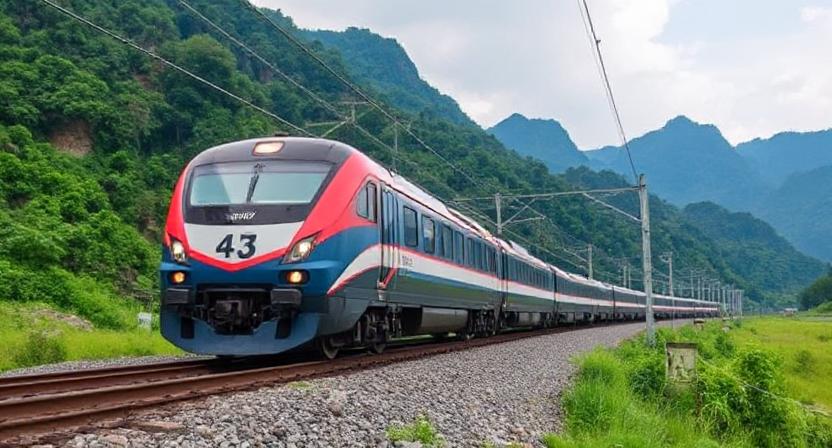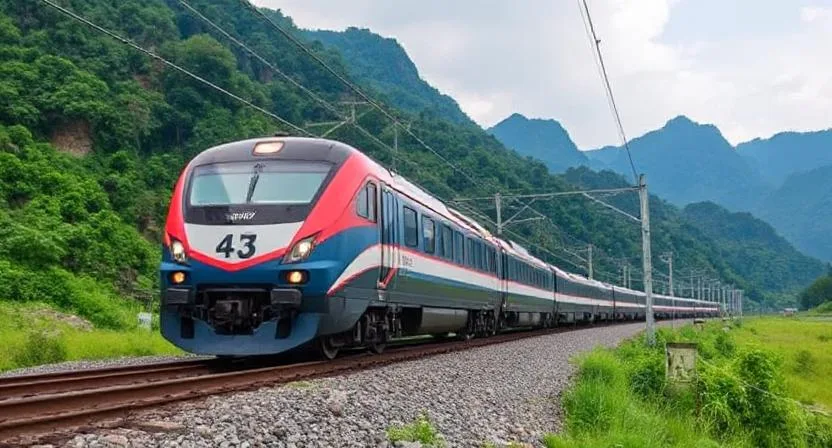Published on
August 17, 2025

A groundbreaking initiative to link several Southeast Asian nations through the Trans-Borneo High-Speed Rail has taken a significant step forward, with Malaysia investing \$1.47 million into a comprehensive study. This study, part of the nation’s strategic planning, will explore whether the high-speed rail system can transcend conceptual discussions and become a tangible reality, reshaping transportation on the island of Borneo. Envisioned as a key catalyst for improved connectivity, this ambitious plan aims to foster economic growth and regional cooperation across Sabah, Sarawak, Brunei, and Kalimantan in Indonesia.
A Vision of Seamless Regional Travel
The idea for a Trans-Borneo High-Speed Rail is not new. It first surfaced in 2015, proposed by Malaysia’s former government, with the objective of creating a high-speed connection across the island of Borneo. Initially introduced as a concept for enhancing mobility and cross-border trade, the vision became increasingly more defined over the years. The idea gained fresh momentum in 2024 when a multi-billion-dollar plan for the rail system was presented, calling for a high-speed rail network spanning 1,600 kilometers, with trains traveling at speeds of 350 kilometers per hour.
The plan envisions a two-phase approach, beginning with a connection linking key cities in Sarawak, Brunei, and Sabah. The first phase aims to connect Pontianak in Indonesia to Kota Kinabalu in Malaysia, passing through major cities such as Kuching, Sibu, Bintulu, and Miri, and linking Brunei’s significant hubs such as Bangar and Bukit Panggal.
Detailed Feasibility Study Kicks Off
To assess the viability of such an extensive infrastructure project, Malaysia has commissioned a feasibility study, which commenced in June 2025. This 12-month study is part of the 12th Malaysia Plan and will analyze various critical elements: the technical challenges, commercial feasibility, socio-economic impacts, and the operational requirements for the rail system. The study’s findings will inform subsequent decisions, with results expected to be delivered by the third quarter of 2026.
One of the key challenges highlighted by experts is Borneo’s rugged terrain, which presents substantial engineering hurdles. From dense forests to mountain ranges, constructing high-speed rail lines through these varied landscapes will require innovative solutions. These geographical obstacles contribute to the project’s current estimated cost of \$13.3 billion, a figure that raises concerns about the financial sustainability of the proposal.
Despite the challenges, proponents argue that the long-term benefits far outweigh the initial investment. If successful, the Trans-Borneo High-Speed Rail could revolutionize transport within the region, stimulating growth in underserved rural areas, enhancing trade routes, and improving regional integration.
A Transformative Project for Southeast Asia
Should the feasibility study confirm that the Trans-Borneo High-Speed Rail is financially and technically viable, the project would become one of Southeast Asia’s most significant cross-border infrastructure ventures. Beyond just improving transportation, the rail system is expected to bolster regional ties by connecting people and businesses across four distinct countries.
Not only would it make travel faster and more efficient, but it could also contribute to economic diversification in rural areas. As Borneo remains one of the more remote regions in Southeast Asia, providing accessible and fast transportation could serve as a game-changer in terms of tourism, local industry growth, and the integration of smaller economies into larger regional markets.
Weighing the Risks and Rewards
While there are clear benefits to such an ambitious undertaking, critics of the project point out the financial risks involved. The large-scale investment required, paired with the inherent uncertainties tied to such a massive infrastructure project, raises questions about the feasibility of sustaining long-term operations. Some argue that the initial costs may not justify the long-term returns, especially if the rail system struggles to generate the expected traffic volume to maintain profitability.
However, supporters of the Trans-Borneo High-Speed Rail remain optimistic, emphasizing the broader strategic gains that could come from improved transportation. They argue that the project has the potential to act as a cornerstone for broader economic development, offering long-term returns that far exceed initial costs.
As the feasibility study progresses and results are expected in 2026, the dream of a connected Borneo hangs in the balance— poised to either remain a visionary idea or take its first steps toward becoming a reality.






